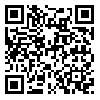BibTeX | RIS | EndNote | Medlars | ProCite | Reference Manager | RefWorks
Send citation to:
URL: http://rjms.iums.ac.ir/article-1-835-en.html
Background & Aim: Succinylcholine has obvious advantages for facilitating endotracheal intubation in the ambulatory setting patients(eg: low cost, fast onset and no need for reversal of neuromuscular relaxant). Unfortunately postoperative myalgia(POM) may frequently occur after the use of succinylcholine and this myalgia may be particularly troublesome in outpatients. This study was conducted to evaluate the efficacy of Atracurium or Lidocaine alone or together for prevention of succinylcholine – induced fasciculation and postoperative myalgia in patients undergoing small or ambulatory surgery. Patients and Methods: This study was prospective and clinical trial and conducted on 80 ASA physical status I, II patients aged between 30-50 years that were scheduled for elective and ambulatory or small surgeries under general anesthesia in Uromieh Imam Khomeini hospital. Patients were randomly assigned to one of the four groups(n= 20 for each group) group 1: without pretreatment, group 2: 3mg atracurium, group 3: 1mg/kg lidocaine, group 4: 3mg atracurium and 1mg/kg lidocaine together, before 1.5mg/kg succinylcholine was administered. During induction of anesthesia incidence of fasciculation was assessed and four point rating scale was used for its severity assessment. In addition, severity of myalgia was assessed by a four point rating scale at 4, 12, and 24 hours postoperatively. For each of patients data collected included demographic variables(eg: age, sex, duration of operation), presence or absence of fasciculation, myalgia, severity of myalgia, severity of fasciculation and time of onset of myalgia. Correlations between fasciculation and myalgia, limitation in ambulation, and need for excessive analgesics in postoperative phase were assessed and then differences analyzed via Fisher's-Exact test and Chi-Square test. P value<0.05 was considered significant. Results: Non of the patients complained of any side effects after administration of the study drugs. Severity and rate of fasciculation was observed less frequently in groups 1, 3 (30%,50%) as compared with groups 2,4(10%,10%). This difference was significant between groups 1 and 2(pv=0.014) and between groups 1 and 4(pv=0.014). Meanwhile this comparison was not significant between other groups. Inother words decrease in incidence of fasiculation is more pronounced with use of atracurium alone or atracurium with lidocaine than use of succinylcholine without any pretreatment. Seventy percent of fasciculated patients had myalgia in the remaining 30% postop myalgia did not occur. Incidence of myalgia was more frequent in groups 1,3(40%, 25%) as compared with group 2(5%) and this difference was significant between groups 1,2(pv=0.021). However it was not statistically significant between groups 1 and 3(Pv=0.5). However none of the patients in group 4 reported myalgia. Severity of myalgia in groups 1 and 3 was mild and moderate but this severity in group 2 was only mild. Severe myalgia was not reported in any of the cases. Conclusion: This study suggests that use of succinylcholine in conjuction with atracurium(3mg) or lidocaine(1mg/kg) as pretreatment resulted in reduction of fasciculation and postoperative myalgia, (although atracurium was more effective than lidocaine).This study demonstrated that pretreatment with atracurium combined with lidocaine was more effective in reducing Succinylcholine-induced fasciculation and postoperative myalgia, in comparison to using each alone.





